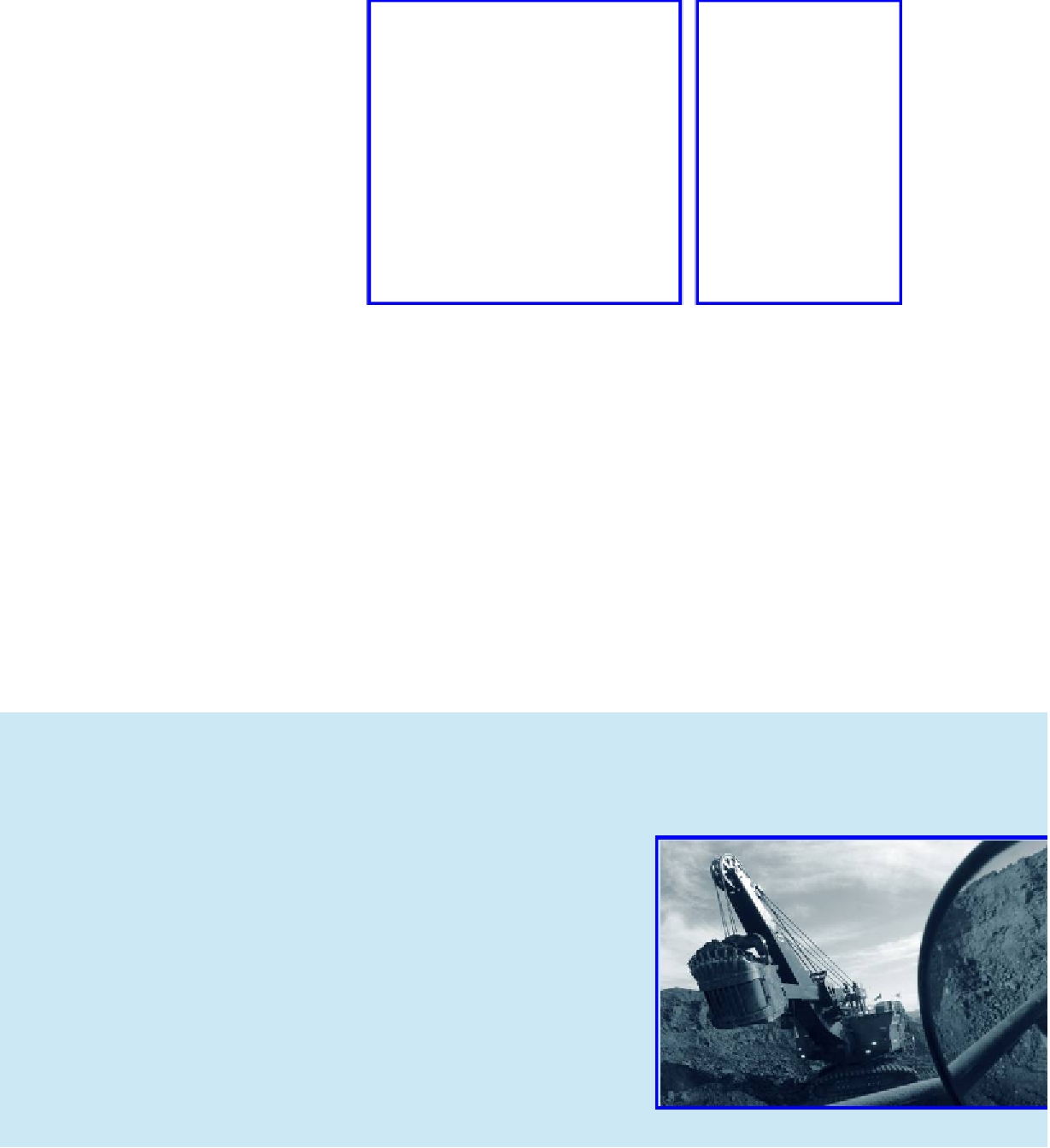Environmental Engineering Reference
In-Depth Information
FIGURE 5.3
Seabed Mining near the South-West
Coast of Africa, and Traditional Mining
by Hand
Eroded from kimberlite, diamond
becomes an ideal placer mineral in
streambeds and in beach and coastal
sands and gravels. Vacuum devices are
used to excavate diamonds-bearing
sediment from sea bed placer deposits.
Photo Credits:
www.debeersgroup.com
Ira de Reuter 2007 (photo to the right)
extensively applied in Northern European countries to generate fuel for more than 100
peat i red power plants, is closely related to coal mining.
Although coal and petroleum would not be classii ed by chemists as minerals, they are
frequently referred to as fuel minerals in the mining industry (
Case 5.5
). It may also be
argued that groundwater should be considered as a mineral, and groundwater abstraction
should consequently be subject to mining legislation. However, the main distinction here is
that groundwater is (usually but not invariably) a renewable resource, which is harvested,
rather than mined. The exploitation of petroleum and gas, while originating from min-
ing, has evolved into a separate highly specialized discipline involving technologies quite
different from those used in mining. Oil and gas extraction will not be further discussed
in this topic. However, it will become apparent that many of the environmental and social
issues associated with mining are similar to issues faced by the oil and gas industry.
Many of the environmental and
social issues associated with
mining are similar to issues faced
by the oil and gas industry.
CASE 5.5
Oil Sand Mining in Canada
Nothing demonstrates the blurred boundary between fossil
fuels and minerals extraction better than oil sand mining in
Canada, home of large oil sand deposits. The vast majority
of Canada's oil sands are located in Alberta, where they
underlie an area larger than Florida. Canada's oil sands are
the second single largest hydrocarbon deposit on Earth,
second only to the vast oil resources in Saudi Arabia. While
this resource is next door to the biggest market for oil
products, the USA, large-scale development started less than
10 years ago. Why? The costs of extracting oil from sand
are tremendous. Depending on the depth of the reserves,
oil sands are either surface mined from open pits (strip
mining) or heated so the bitumen can fl ow to a well and
be pumped to the surface (in situ extraction). On average
it requires two tonnes of oil sand to produce one barrel of
oil. Crude bitumen is extracted from the mined oil sands
through a process that essentially mixes the oil sands with
hot water to wash the bitumen from the sand. Producing
the fi nal synthetic crude oil from bitumen requires two
further stages of upgrading, hydro-cracking and hydro-
treating. Synthetic crude oil is then refi ned to the fi nal
petroleum products.
Source: Woynillowicz et al. 2005; Photo Credit: Melina
Mara 2005, The Washington Post












Search WWH ::

Custom Search